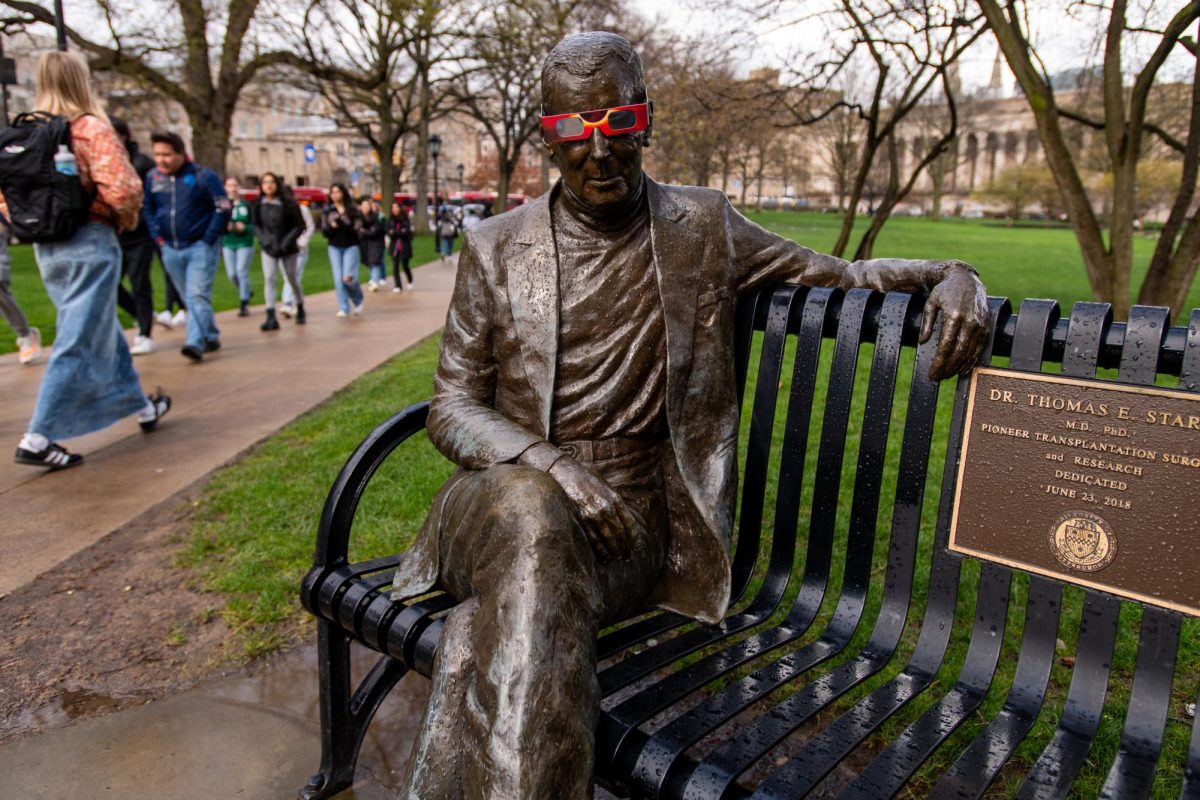Fourth-year astronomy doctoral student Tori Bonidie was an undergraduate student when she saw her first solar eclipse in 2017. Seven years later, Bonidie is just as enthusiastic to witness the upcoming astronomic event.
“It’s an event that reminds us why we got so excited in astronomy in the first place,” Bonidie said.
In Pittsburgh, the 2024 solar eclipse will start on Monday, April 8 at 2 p.m., according to NASA. Despite not being in the path of totality — the area of Earth completely in the moon’s shadow — students will still be treated to an awe-inspiring phenomena.
Professor of physics and astronomy Carlos Badenes said, “In Pittsburgh, [the eclipse] will be 97% total. So what you’ll see is the moon [covering] almost all the face of the sun.”
Badenes explained that solar eclipses are the result of the sun’s and moon’s differing orbits relative to the Earth. Compared to Earth’s orbit of the sun, the moon is tilted by approximately 5 degrees. As such, whenever the moon’s orbit places it between the sun and Earth every month, which is referred to as a new moon, it is slightly above or below the Earth’s orbital plane.
When the orbits of the sun, moon and Earth align perfectly, viewers on Earth will witness totality, the complete occlusion of the sun by the moon. Oftentimes, however, the shadow the moon casts on the Earth is not in an ideal location.
“Being in the path of totality is rare. Often, solar eclipses happen, but the path of totality is in the Pacific Ocean [for example],” Badenes said.
Researchers at Pitt are taking advantage of the solar eclipse by traveling to Texas to conduct experiments. The Pitt Shadow Bandits, led by professors Russell Clark, Sandhya Rao and David Turnshek, are using weather balloons to better understand atmospheric conditions throughout a solar eclipse, according to Pittwire.
Travis Court is an astronomy graduate student tasked with taking a group of undergraduates to Pymatuning State Park to view the solar eclipse. Court stressed that regular sunglasses will not be sufficient for the solar eclipse. Only glasses specifically branded as “solar eclipse glasses” will provide adequate eye protection. However, buying the cheapest pair online from an unreputable source may prove disastrous.
“Be a little careful where you get them — there are some counterfeits out there,” Court said.
Badenes warns that looking at the sun for prolonged periods can lead to permanent damage or complete blindness. However, in the path of totality when the sun is 100% covered, it is OK to not use glasses only for that short window.
“You should never, ever look at the sun without protection. You can get severe retinal damage, which is not repairable,” Badenes said. “[But] it’s safe to look at the sun without glasses during totality.”
For those traveling north into the path of totality, Bonidie said the view is truly once in a lifetime. She recalled seeing stars during the day and birds ceasing to chirp during the 2017 solar eclipse. Since the moon completely shields viewers from the sun’s brightness, the sun’s corona will be visible around the moon.
“The outermost atmosphere of the sun is the corona. We can’t see that with our naked eye because it’s so dim in comparison to the rest of the sun,” Bonidie said.
NASA’s interactive website contains a map of the path of totality along with when it will occur. Even for those staying in Pittsburgh, Court still recommends going outside with solar eclipse glasses.
“Even if you might miss it, or you’re not in a path of totality, you can still see the difference,” Court said.
Badenes said to expect heavy traffic if traveling, as historically, solar eclipses attract visitors from throughout the country. Erie has issued a statement regarding delays and closures with up to 200,000 visitors expected.
The best advice Bonidie has for first-time viewers is to not get caught up with getting a perfect picture of the phenomena. With totality only lasting approximately four minutes, it is easy to not be fully present for the event.
“I think you need to have your phone down during it and just experience it fully with no distractions,” Bonidie said



